News
[Interview] Robert Eggers on ‘The Lighthouse’: “We Wanted to Be Challenged”
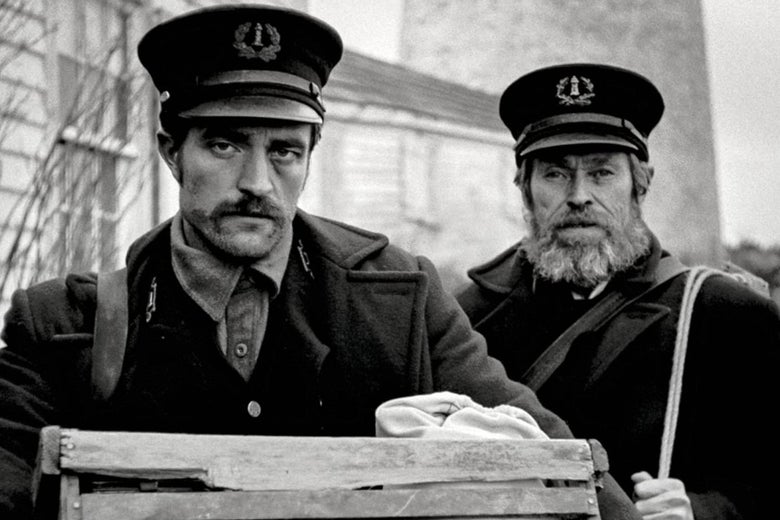
Robert Eggers shocked audiences with his feature film debut, The Witch, and quickly became a name to watch for in the sphere of genre cinema. Anticipation has been building for the release of his newest film, The Lighthouse, a feverish descent into madness driven by two heavy-hitting performances by stars Robert Pattinson and Willem Dafoe.
I recently had the opportunity to chat with Eggers about The Lighthouse, its knockout performances, and the unique challenges of crafting a film with such meticulous attention to detail.
Click here to read my full review of The Lighthouse from its premiere at TIFF
Kelly McNeely: First off, what was the genesis of the film? Where did this concept sort of come from? How was that born?
Robert Eggers: My brother was working on a screenplay that he said was about a ghost story in a lighthouse, and I thought that was a great concept and was hoping that he wouldn’t get very far with it so that I could ask his permission to steal it. And that’s what happened because when he said ghost story in a lighthouse, I pictured this black and white, crusty, dusty, musty, rusty atmosphere, very much like Misery from the first dinner scene. And I wanted to find a story that went with that atmosphere.
So back in 2011 or 2013, or something like that, when I started working on The Lighthouse, The Witch came together and in the wake of that I called up my brother and said, look, let’s write this lighthouse script together, I’m developing some other larger things, and I think it would be wise to have something smaller in my back pocket. So we took my 10 pages of screenplay and lots and lots of notes and images and turned it into this movie together a couple of years ago.
Kelly McNeely: You’ve got this really impressive commitment to period and aesthetic and atmospheric details, between the natural lighting, the building of the set, the orthochromatic look, and the 1.19:1 ratio. Can you talk a little bit about the process for compiling and building all those elements into the film?
Robert Eggers: Yeah, I mean, everything is sort of in tandem, I’m always researching while I’m writing, and collecting images while I’m writing, and images can inspire themes and whatever, because this film has such a long history in my filmmaking life. I’ve been talking with Jarin Blaschke the DP about this for a year, and we’ve had all kinds of different ideas. And it all kind of comes down to, finally, like what can we get our hands on? And, you know, we would have wanted it shot it on orthochromatic film stock which you can purchase for still photography, but there is no one who can make that into 35mm motion picture film for us, nor could we have afforded it if we wanted to. So we settled on bwXX, the black and white negative that hasn’t changed since the 1950s.
The blacks bottom out suddenly in a very satisfying way, it has extreme micro contrast, and you know what else? Like, it exists! [laughs] And then Jarin worked with Schneider to create a custom filter to give us an orthochromatic look, and then Panavision opens up their closet of mysterious lenses to Jarin who can go in like a giddy school boy and find all kinds of rarities. We have I think two or three shots with a zoom lens that we don’t even know what it is, where it’s from, when it was made. So they thought, “Jarin should take a look at this” [laughs].
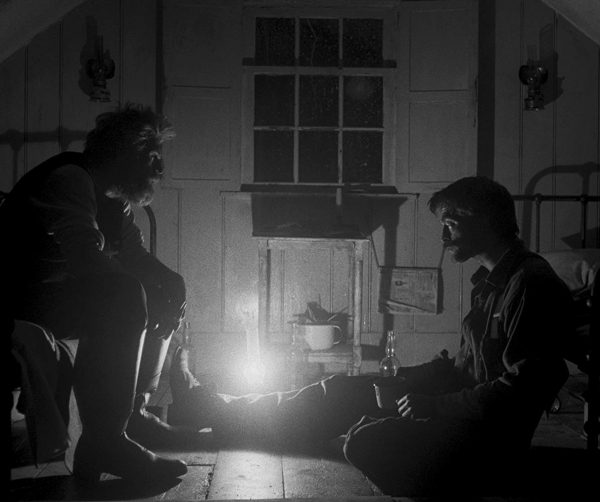
via A24
Kelly McNeely: With The Witch, I know the dialogue was pulled from historical documents. What was the process for writing the dialogue for The Lighthouse?
Robert Eggers: Yeah, the The Witch has a lot of sentences that are intact from the period sources. My conceit at the time, was that to honor these Puritans who were so extreme in their beliefs and their worldview that I needed to actually, like, use the actual words they supposedly said. In this movie, my brother and I didn’t have a lot of sentences that were intact — there are some, but not a lot. But we’re just drawing from our period sources to find a way to write our own dialogue.
The most helpful source was Sarah Orne Jewett, from the good old state of Maine. She was writing in our period and she was interviewing working people on the coast of Maine, and writing her main stories in dialect. And then my wife found us a thesis that was about dialect work in Sarah Orne Jewett that provided the rules for different dialects and so then we could really be be specific with our own work. But Dafoe has a couple of intact sentences that come directly from retired sea captains in Jewett’s work, which supposedly came directly from real retired sea captains.
Kelly McNeely: What about the accents? Because there are very specific accents that they use in The Lighthouse.
Robert Eggers: So Rob’s accent is like, you know, an old timey New England accent. Like it’s based on a down east accent, but I think if you are an actual New Englander, you know, you get the flavor of someone who hasn’t just been one place in New England his whole life. I bought my family car when I was visiting my parents recently in New Hampshire and the car salesman grew up in Boston and moved to Maine, and then New Hampshire, and sounded pretty close to Rob, they’re a little bit similar. Dafoe’s accent is something that is theoretical with the Rhotic R– the hard R, the pirate Arr — having that in coastal Maine, we know that that was in New Brunswick a little further north, and in Nova Scotia a little further north than that.
Kelly McNeely: Robert Pattinson and Willem Dafoe really endure; they go above and beyond with their physicality and emotionality. Was there ever a point you had to pull things back?
Robert Eggers: Absolutely not. You know, it’s an extreme story and these are two incredibly dedicated, passionate, hardworking actors who are after challenging material, and want to be pushed to their limit and I didn’t need to pull things back. I also didn’t really need to push things, because they wanted to give their very best to this movie. There’s been a lot of discussion in the press in the past about Robert Pattinson wanting to punch me in the face for a certain scene. But if it’s raining outside and the rain isn’t reading in a close up, you’re going to have to pull out the fire hose for the rain to read. And that’s not easy. But you know if Rob wished to cause me physical harm, I didn’t know that at the time because he was professional as hell and wanted to make sure that that moment was as good as it could possibly be.
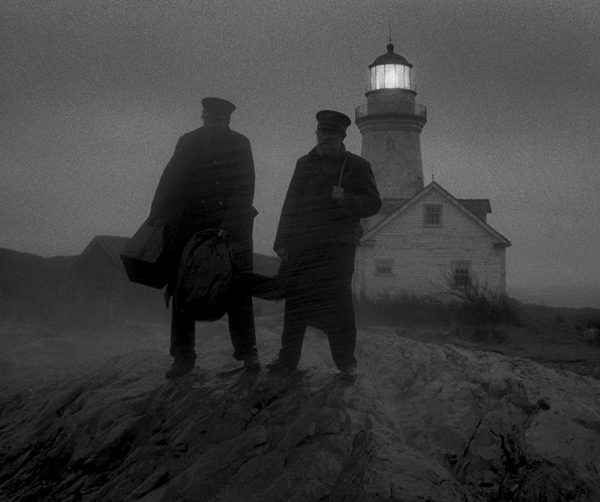
via A24
Kelly McNeely: What myths did you pull from to form the story?
Robert Eggers: The bones of the story are based on what’s allegedly a true story. It’s often referred to as Smalls Lighthouse Tragedy, and it took place in Wales in around 1800. And it was two lighthouse keepers, both named Thomas, one older one younger, they get marooned on their island at their lighthouse station because there’s a storm. The older one dies, and the younger one goes mad. There’s a folk tale-like ending that I won’t divulge, but you can easily look up. And that was the sort of genesis of this — or rather that was the seeds that were planted for the story to grow from.
When Max — my brother who wrote this with me — and I were continuing to flesh out the story, we kind of said to ourselves, what classical myths or myth have we sort of accidentally come up with? With The Witch I was sort of looking at Hansel and Gretel, among other things, after I had written what I had written to sort of re-infuse Hansel and Gretel-isms. So we asked ourselves what classical myths have we sort of conjured up here to try to re-infuse themes, motifs, and imagery. We chose classical motifs because of allusions to classical mythology that Dafoe makes it in sea spells that were inspired by Melville. So there’s a mishmash of different things from Proteus to Prometheus that some classicists might be upset that we’ve combined, but, I think it’s okay.
Kelly McNeely: I love the use of natural lighting in both The Witch and The Lighthouse. What inspired you to film that way?
Robert Eggers: Jarin Blaschke — the DP — and I like a naturalistic approach. The lighting in The Lighthouse is more stylized than The Witch; The Witch literally does use natural light and flame for all but one or two shots, except for the night exteriors which obviously need to be lit.
The Lighthouse, on the other hand, uses black and white negative that hadn’t changed since the 1950s so it requires a lot more light to be an exposure. However, we did not light it like an old movie; even though the lighting is quite dramatic and it has exaggerated chiaroscuro, unlike old movies, we use the practical lighting sources that are in the location to light the scenes. That said, it’s not actually a flame in that kerosene lamp because you would never get exposure from a flame. So we have a 600 watt halogen bulb on a flicker dimmer that is creating that flame-like look. And I like it, especially with the black and white because it flickers, you know, like old cinema. The image has breath, if I can be so precious.
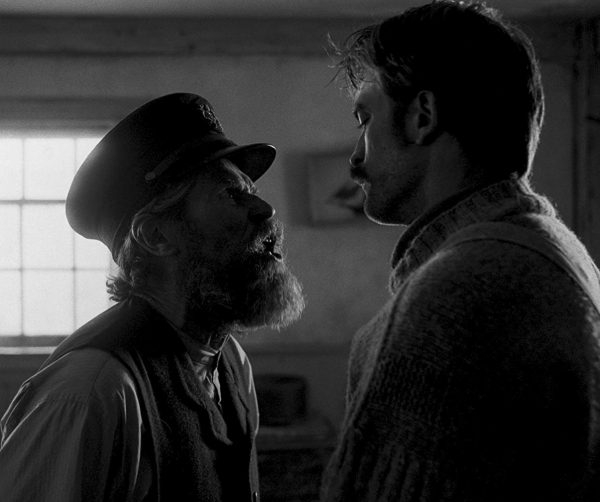
via A24
Kelly McNeely: I understand you built the entire set, which is incredible. What were the challenges of filming on location?
Robert Eggers: Yes, we built every building that you see in the film, including the 70 foot lighthouse tower. We couldn’t find a lighthouse that worked for us, we couldn’t find one with good road access that was practical to shoot on. But having to build one meant that we had a lot more control. So overall, shooting on location with building a lot of sets gave us a ton of control. That said, in order to tell the story properly, we chose a very punishing inhospitable location where we knew we would get terrible weather. And so that did pose a lot of problems — it’s impossible to move fast as a human being under gale force winds with torrential rain, and you know in temperatures just above freezing and you can’t move quickly; the camera is going to break down. So there’s a lot of challenges, but no one’s complaining. This is what we signed up for. We wanted to be challenged.
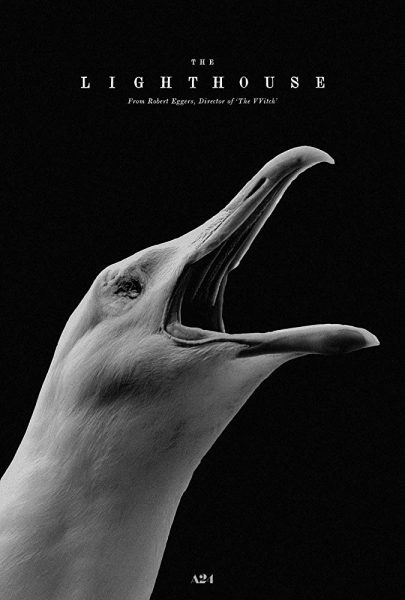
The Lighthouse was released to limited theaters in the US on October 18, with a wide release to follow on October 25.
'Civil War' Review: Is It Worth Watching?
Follow our new YouTube channel "Mysteries and Movies" here.

Movies
The Original ‘Beetlejuice’ Sequel Had an Interesting Location
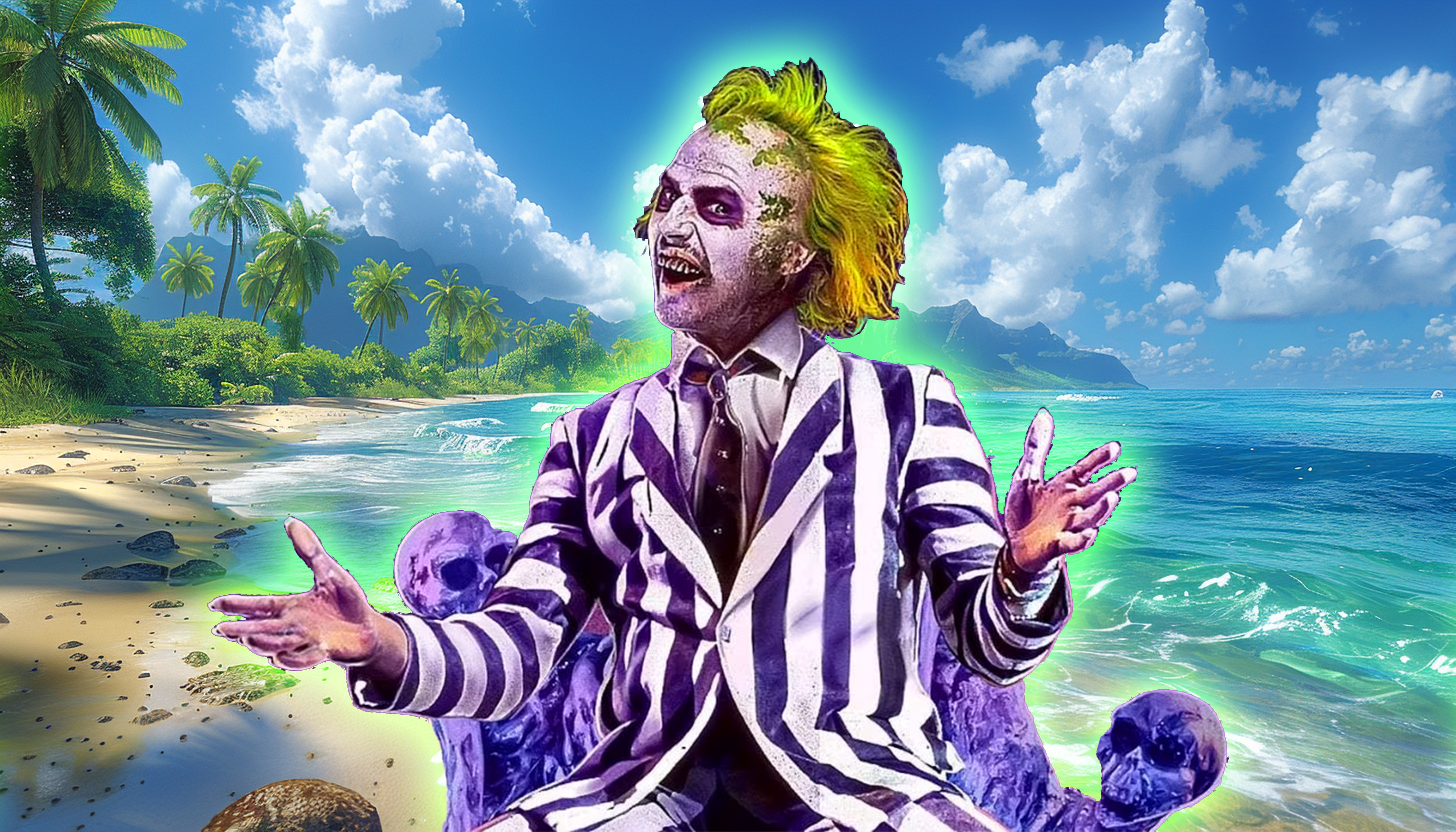
Back in the late ’80s and early ’90s sequels to hit movies weren’t as linear as they are today. It was more like “let’s re-do the situation but in a different location.” Remember Speed 2, or National Lampoon’s European Vacation? Even Aliens, as good as it is, follows a lot of the plot points of the original; people stuck on a ship, an android, a little girl in peril instead of a cat. So it makes sense that one of the most popular supernatural comedies of all time, Beetlejuice would follow the same pattern.
In 1991 Tim Burton was interested in doing a sequel to his 1988 original, it was called Beetlejuice Goes Hawaiian:
“The Deetz family moves to Hawaii to develop a resort. Construction begins, and it’s quickly discovered that the hotel will be sitting on top of an ancient burial ground. Beetlejuice comes in to save the day.”
Burton liked the script but wanted some re-writes so he asked then-hot screenwriter Daniel Waters who had just got done contributing to Heathers. He passed on the opportunity so producer David Geffen offered it to Troop Beverly Hills scribe Pamela Norris to no avail.
Eventually, Warner Bros. asked Kevin Smith to punch up Beetlejuice Goes Hawaiian, he scoffed at the idea, saying, “Didn’t we say all we needed to say in the first Beetlejuice? Must we go tropical?”
Nine years later the sequel was killed. The studio said Winona Ryder was now too old for the part and an entire re-cast needed to happen. But Burton never gave up, there were a lot of directions he wanted to take his characters, including a Disney crossover.
“We talked about lots of different things,” the director said in Entertainment Weekly. “That was early on when we were going, Beetlejuice and the Haunted Mansion, Beetlejuice Goes West, whatever. Lots of things came up.”
Fast-forward to 2011 when another script was pitched for a sequel. This time the writer of Burton’s Dark Shadows, Seth Grahame-Smith was hired and he wanted to make sure the story wasn’t a cash-grabbing remake or reboot. Four years later, in 2015, a script was approved with both Ryder and Keaton saying they would return to their respective roles. In 2017 that script was revamped and then eventually shelved in 2019.
During the time the sequel script was being tossed around in Hollywood, in 2016 an artist named Alex Murillo posted what looked like one-sheets for a Beetlejuice sequel. Although they were fabricated and had no affiliation with Warner Bros. people thought they were real.
Perhaps the virality of the artwork sparked interest in a Beetlejuice sequel once again, and finally, it was confirmed in 2022 Beetlejuice 2 had a green light from a script written by Wednesday writers Alfred Gough and Miles Millar. The star of that series Jenna Ortega signed on to the new movie with filming starting in 2023. It was also confirmed that Danny Elfman would return to do the score.
Burton and Keaton agreed that the new film titled Beetlejuice, Beetlejuice wouldn’t rely on CGI or other other forms of technology. They wanted the film to feel “handmade.” The film wrapped in November 2023.
It’s been over three decades to come up with a sequel to Beetlejuice. Hopefully, since they said aloha to Beetlejuice Goes Hawaiian there has been enough time and creativity to ensure Beetlejuice, Beetlejuice will not only honor the characters, but fans of the original.
Beetlejuice, Beetlejuice will open theatrically on September 6.
'Civil War' Review: Is It Worth Watching?
Follow our new YouTube channel "Mysteries and Movies" here.
News
Russell Crowe To Star in Another Exorcism Movie & It’s Not a Sequel

Maybe it’s because The Exorcist just celebrated its 50th-anniversary last year, or maybe it’s because aging Academy Award-winning actors aren’t too proud to take on obscure roles, but Russell Crowe is visiting the Devil once again in yet another possession film. And it’s not related to his last one, The Pope’s Exorcist.
According to Collider, the film titled The Exorcism was originally going to be released under the name The Georgetown Project. Rights for its North American release were once in the hands of Miramax but then went to Vertical Entertainment. It will release on June 7 in theaters then head over to Shudder for subscribers.
Crowe will also star in this year’s upcoming Kraven the Hunter which is set to drop in theaters on August 30.
As for The Exorcism, Collider provides us with what it’s about:
“The film centers around actor Anthony Miller (Crowe), whose troubles come to the forefront as he shoots a supernatural horror movie. His estranged daughter (Ryan Simpkins) has to figure out whether he’s lapsing into his past addictions, or if something even more horrific is occurring. “
'Civil War' Review: Is It Worth Watching?
Follow our new YouTube channel "Mysteries and Movies" here.
Movies
New F-Bomb Laden ‘Deadpool & Wolverine’ Trailer: Bloody Buddy Movie
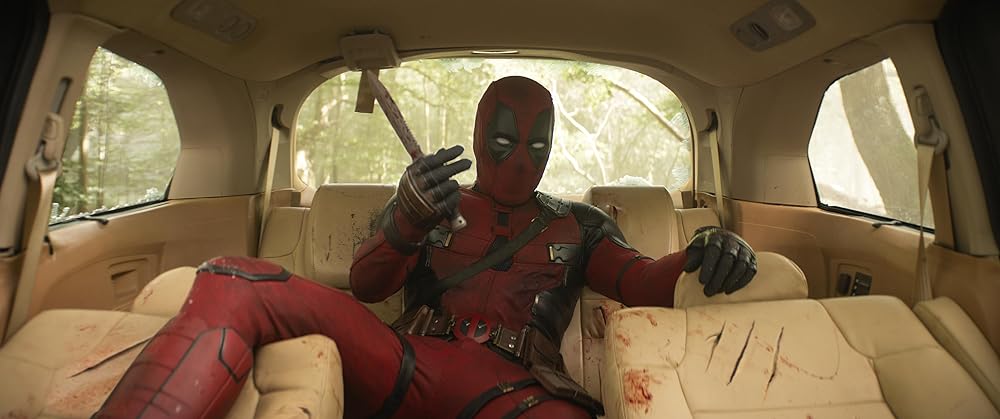
Deadpool & Wolverine might be the buddy movie of the decade. The two heterodox superheroes are back in the latest trailer for the summer blockbuster, this time with more f-bombs than a gangster film.
This time the focus is on Wolverine played by Hugh Jackman. The adamantium-infused X-Man is having a bit of a pity party when Deadpool (Ryan Reynolds) arrives on the scene who then tries to convince him to team up for selfish reasons. The result is a profanity-filled trailer with a Strange surprise at the end.
Deadpool & Wolverine is one of the most anticipated movies of the year. It comes out on July 26. Here is the latest trailer, and we suggest if you are at work and your space isn’t private, you might want to put in headphones.

'Civil War' Review: Is It Worth Watching?
Follow our new YouTube channel "Mysteries and Movies" here.
-
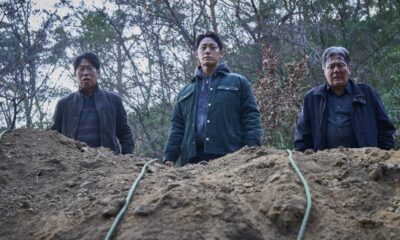
 News7 days ago
News7 days agoThis Horror Film Just Derailed a Record Held by ‘Train to Busan’
-

 News5 days ago
News5 days agoWoman Brings Corpse Into Bank To Sign Loan Papers
-

 News6 days ago
News6 days agoHome Depot’s 12-Foot Skeleton Returns with a New Friend, Plus New Life-Size Prop from Spirit Halloween
-

 News4 days ago
News4 days agoBrad Dourif Says He’s Retiring Except For One Important Role
-

 Strange and Unusual4 days ago
Strange and Unusual4 days agoMan Arrested for Allegedly Taking a Severed Leg From Crash Site And Eating It
-

 Movies5 days ago
Movies5 days agoPart Concert, Part Horror Movie M. Night Shyamalan’s ‘Trap’ Trailer Released
-
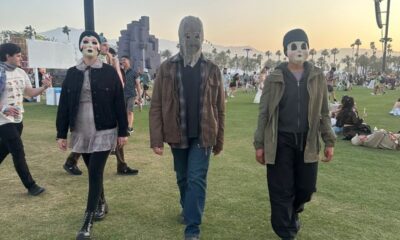
 Movies6 days ago
Movies6 days ago‘The Strangers’ Invaded Coachella in Instagramable PR Stunt
-

 Movies5 days ago
Movies5 days agoAnother Creepy Spider Movie Hits Shudder This Month
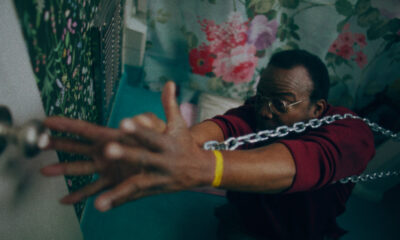

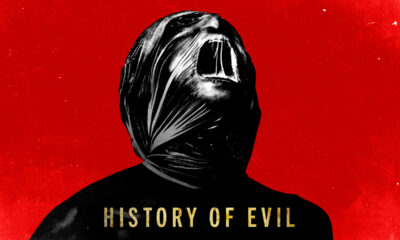

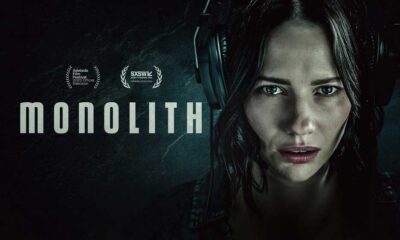


















You must be logged in to post a comment Login